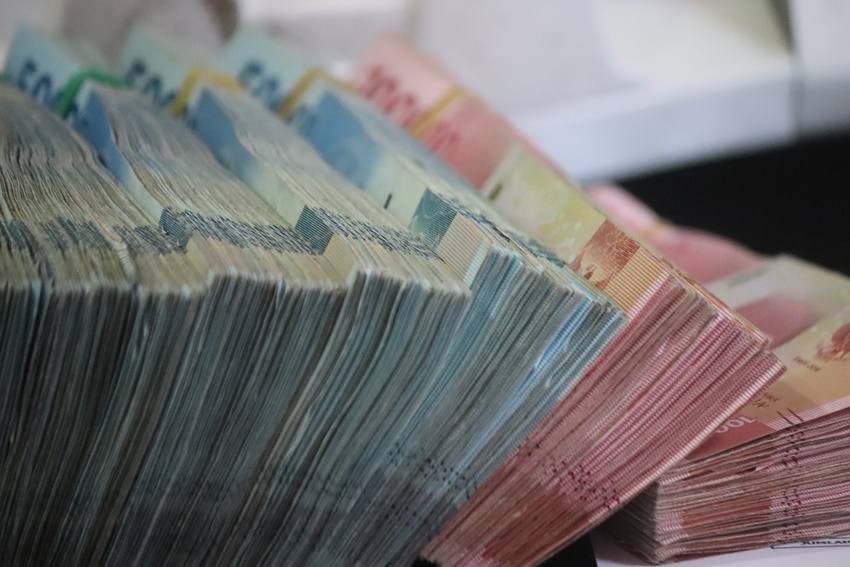Volatile markets always have people scrambling to protect themselves from inflation because we have learned from past mistakes. As the cost of living rises, albeit, at a low percentage, the effect of this rise compounded over 20 years is still a lot to take in. What costs $10,000 today could be $50,000 when you’re 20 years older, meaning that the investment choices you make today about your portfolio could make a huge difference 20 years into the future when inflation levels may hit unprecedented heights. Plan inflation into your retirement plan, your passive income plan and your investing plan.
Even when economic progress is at an all-time high, there’s always that gnawing inflationary pressure that something will go wrong. For most households, hedging against inflation involves ensuring that their primary sources of wealth rise at a rate higher than or equal to the inflation rate. But the reality is far from that simple; while the salary increments and minimum wage get higher, the prices of goods are also a lot higher. To protect your assets from inflation, you have to be aware of what threat inflation has on your assets.
Understanding how inflation threatens your assets
A diversified portfolio of inflation-proof assets provides the proper stability and anchor for inflation. Inflation could mean an astounding economic shutdown with colossal ramifications. With prices going higher and interest rates being shakier than most, the whole economic uncertainty could affect lending and borrowing, and that’s where having your assets wrapped up in a neat little protected pack comes in handy.
When investments keep losing their potency, hedging your assets is probably the best way to stay afloat and survive the headwinds of growing your investments’ value. You can protect your assets if you know which assets can survive inflation first. This ensures that you can focus and consolidate your efforts on those that have a shot at surviving inflation. Some can even end up as big earners during inflation.
The actual dark side of inflation is beyond overpriced groceries; your assets could lose value, and your shares would significantly reduce in value if the company’s revenue doesn’t match the inflation rate. Despite the slow, gradual burn of inflation at almost 3% annually, the purchasing power will keep weakening over time, and should inflation come earlier, the recovery period for most people would take a lot longer.
Amidst pandemic issues affecting the supply chains and commodity prices across the world, inflation could keep soaring. As an investor-everyone is an investor in something, protecting your assets and nest egg from the grip of inflation is a top priority.
Get the facts about your returns
Assets are only as good as the yield and value they offer. If an asset offers a return of 3% while the inflation is at 4%, your real rate of return is -1%, which isn’t that good. You want to have a real rate of return of at least 3 or 4% above inflation. Dig into the asset and watch the numbers, are they good enough? and for how long can the asset hold on to its value. If the asset is shaky with returns, it is unpredictable how inflation could affect it. In some cases, some assets, including bonds, could have fixed rates, meaning that the value they yield is capped at a certain percentage regardless of how fast or how slow inflation is.
Your asset portfolio should have multiple assets in different classes. High-yield assets are generally preferred, with a few people skeptical about investing in assets with higher volatility. However, some assets have lower volatility, but they won’t increase in value fast enough. Owning these assets is like you’re simply stuffing your money somewhere or stashing it in a bank account with the hopes of a high-interest rate. Your assets need to keep up with inflation, which means increasing in value in tandem with inflation. Cut out the assets in your portfolio that don’t have great forecasts or any promise of increased value.
Take risks
Predicting the future, especially when it comes to inflation, isn’t as easy as expected, but there will always be the threat of inflation. Diversifying your portfolio and spreading the risk across multiple assets will help you manage it more than inventing complicated strategies to avert risk and stay in the safe zone.
Investing in different asset classes and various types in those classes will expand your portfolio and protect your assets by hedging them against inflation. Investing everything in a single asset does nothing to protect your money if the assets hit a bump and their value tanks. While your risk appetite might be insatiable, getting smart about risks involving your assets and seeing the whole picture would prevent you from losing wealth by investing in unstable assets.
If you are not good with risks and the risks are keeping you awake at night then you need to consider options which are mild risks. Do not push yourself into a situation which will make you sick. Your health and wellbeing are the most important during anytimes.
Mix them up
Your asset portfolio should include both long-term and short-term assets. Some will tend to perform better and appreciate in the long term, like stocks, real estate, and metals, compared to other assets. However, not everyone has the patience and tolerance for riding through the stock turns.
Choosing the asset to invest in depends on how long you expect to keep getting value and returns from it, your age, and your risk appetite. An example is that someone with a moderate risk appetite but still at a young age would be better off creating a portfolio with more stocks than bonds. This will help grow their money and protect them from inflation while making it easy to pull out when the stocks dip.
Multiple sectors and asset classes do well in inflation, including financials, commodities, technology, real estate, and energy. Some of the asset classes and the rules when investing in them include;
Appreciation-oriented assets; can be beneficial to invest in them because they offer growth and appreciation rather than just income. Stocks are a great option here.
Real assets; similar to metals and real estate. Their value tends to operate in tandem with inflation. They are tangible and don’t get devalued by inflation as nominal assets do. Their value increases with the inflation trend, meaning that you will make money even as inflation gets higher or lose some value until their value stabilizes.
Variable interest rate assets; Fluctuating interest rates mean that you’ll be getting paid more money at the highest point of inflation compared to fixed-rate assets, which pay the same rate regardless of the inflation rate at the time of payment.
As inflation rears its ugly head, your wealth is much safer invested in assets that accumulate and appreciate rather than speculative investments on assets without a stable base. But everything boils down to your goals for the assets, given that every asset comes with its own share of good and bad features. Protecting the good-performing assets ensures that you can make some money and still bounce back faster after inflation.
Tracking your assets is a crucial part of protecting them. Once you know what is in your portfolio, you can figure out what needs boosting and where you are leaking money and dispose of it. If your asset allocation is a bit too spicy for your risk profile, it probably is. Finding safe ways to inflation-proof and protect your assets will require more than faith-based investments.
Willy Wallace from Fiverr wrote this post, sometimes I hire Fiverr writers to write expert level posts in areas they are proficient in. Subscribe for more business, sales and investing posts. Have a lovely day.











